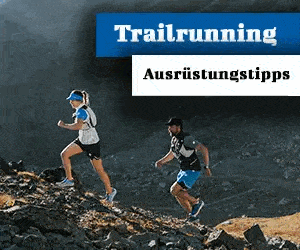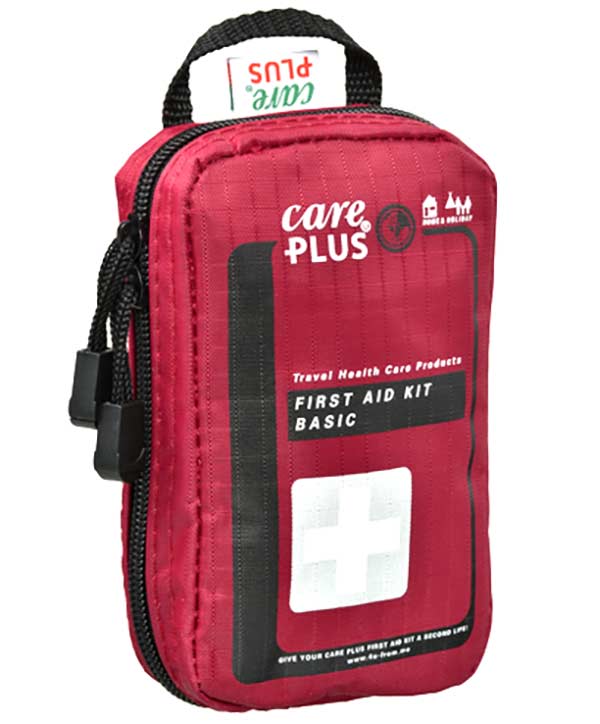According to the mountain emergency statistics of the Swiss Alpine Club, 3680 people got into an emergency or had an accident in the Swiss Alps last year - more than in any previous year. So it's time for us to deal with the topic. We have put together five important first aid tips for you.
Do you know the alpine distress signal? How do you report an emergency to the emergency services? How do you treat a heavily bleeding wound? If an emergency situation arises, it is very often, very quickly, that we are overwhelmed. It is all the more important to know the central aspects of first aid on the mountain and to remind them of them at regular intervals.
1 preparation / equipment
Had, had, bicycle chain. Who does not know it. It is often only when things are serious that you realize what you could have done beforehand. Therefore, two important findings in advance:
- First aid starts with the preparation. In other words: helpful things such as an emergency kit and mobile phone always belong in the climbing backpack.
- Theory does not replace practice. Theoretical knowledge is good, practical application and regular repetition is better. Comprehensive first aid training is therefore recommended for mountaineers (links below).
First aid kit
CarePlus offers 13 different first aid kits which, depending on the area of application, contain special equipment and are of different sizes. At least the compact one Basic set you should always have with you. A more extensive set like the "Mountaineer First Aid Set" would be even better.
Content:
- Sterile compress 5×5 cm, 5 pieces
- Hydrofile bandage 5 cm x 4 m
- Plaster 19×38 mm, 5 pieces
- Plaster 25×72 mm, 5 pieces
- Plaster 60×100 mm, 2 pieces
- Quick bandage 12×12 cm
- Adhesive plaster, roll 1,25 cm x 1 m
- Vinyl gloves, 1 pair
- Alcohol wipes, 4 pieces
- Surgical bandage scissors (small)
- Pliers
- Safety pins, 6 pieces
2 Do the right thing
Especially in alpine terrain or in remote regions, the first aider plays an important, even life-saving role for the casualty. If the worst comes to the worst, it is important not to become active, but to pause for a moment and get an overview.
- Look: analyze the situation. What happened? Involved? injured?
- Think: What are the dangers? To me? For rescuers? For sacrifice?
- Act: Ensure personal safety, rescue or secure victim from danger area, assess victim. Principle: self-protection before victim protection.
Video: Emergency situations on the mountain - correct action in an alpine emergency
3 Alarm – inform rescue service
Once you have gained an overview and assessed the situation, an emergency call will be made if necessary. The following applies: A good alarm system makes life easier for the rescuers.
Accident report with 5 «W»
- Wo (accident location)
- Was (procedure)
- Whow many (number of injured)
- Wmoose (type of injuries)
- Wtypes (any queries)
Important mountain rescue emergency numbers
Within Europe, the rescue service can be alerted via the emergency number 112. Other important numbers are:
- Swiss air rescue service: 1414
- Swiss Air Rescue (from abroad): +41 333 333 333
- A concise summary of most important mountain rescue emergency numbers can be found at the DAV
If you have no reception, the alpine emergency signal can help: give a signal six times a minute, wait a minute, then repeat the signal. To answer, signal three times per minute, then wait one minute.
4 Assessment of the injured person
If the person involved in the accident does not react to being spoken to, to being gently shaken or gently pinched by the rescuer, they will be assessed according to the ABCD scheme. There is also an extended version, the ABCDE scheme, which is not discussed here.
Video: ABCD system: how it's done
Important: If a person is unconscious, an emergency call is made immediately.
ABCD scheme
- A as in Airway: Are the airways clear? Remove obvious foreign bodies
- B for Breathing: Is ventilation necessary? If breathing, observe recovery position and breathing. If not breathing: Begin resuscitation.
- C for Circulation: The heartbeat is checked by feeling the pulse - usually - on the wrist? If the patient shows no signs of life, initiate resuscitation immediately. Chest compressions and ventilations in a ratio of 30:2
- D for disability (neurological condition): Here the consciousness is tested. Among other things, by examining the pupils. Do the pupils react to changes in brightness? Are both pupils the same size?
Caution: Uncontrolled bleeding can lead to life-threatening shock and must be stopped with the highest priority.
5 Further measures - positioning, stopping bleeding, etc.
For external injuries, first responders should attempt to stop bleeding and bandage wounds. Proper positioning aims to immobilize the injured body part and reduce pain. Important: protect the patient from cold and wet conditions. If the appropriate material is available, fix injured limbs well.
Video: Treat heavily bleeding wounds properly
First aid on the mountain: literature, links and courses
- SAC manual: First aid for hikers and mountaineers
- DAV brochure: First aid for mountaineers
- DAV brochure: tips and information. Weather, emergency call and first aid for mountain sports
- DAV: Information about first aid
- Safety Academy Lab Rock: Digital training platform for alpine climbers
- Alpine Club Academy: Safe on the mountain courses
- Swiss Alpine Club: Training Rescue - First Aid
- Swiss Red Cross: Emergency course and first aid courses
That might interest you
- Balanced food on the rock: Thanks to Esbit thermal containers
- The lightest backpack in the world? Ultra-Sil Nano Daypack from Sea to Summit
- The most spectacular «campsite» | Test Sea to Summit Telos TR2
+ + +
Credits: Cover picture Kevin Schmidt



